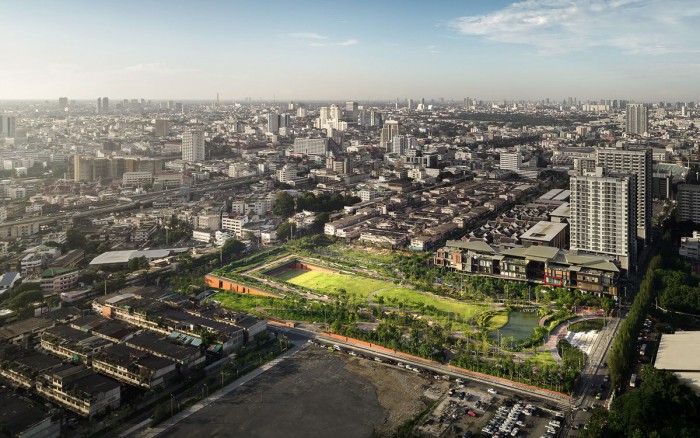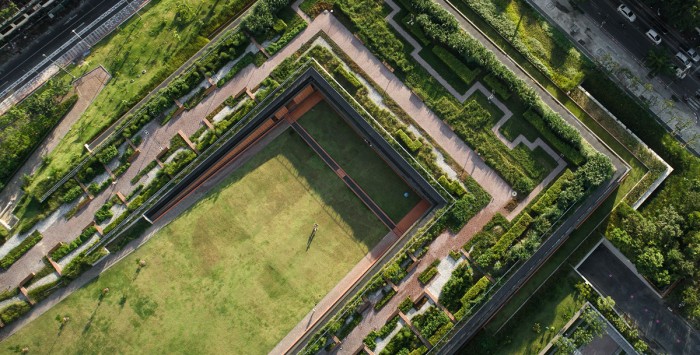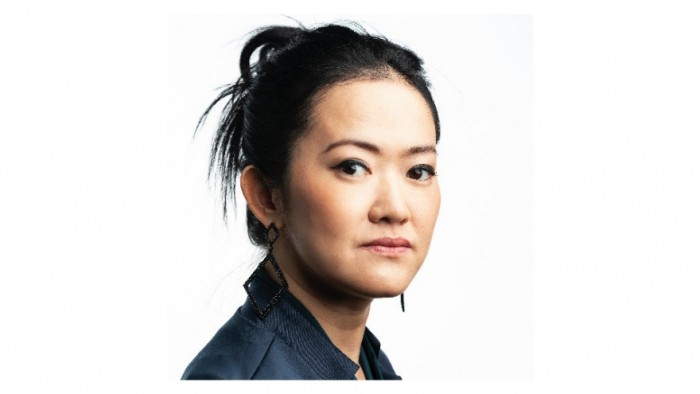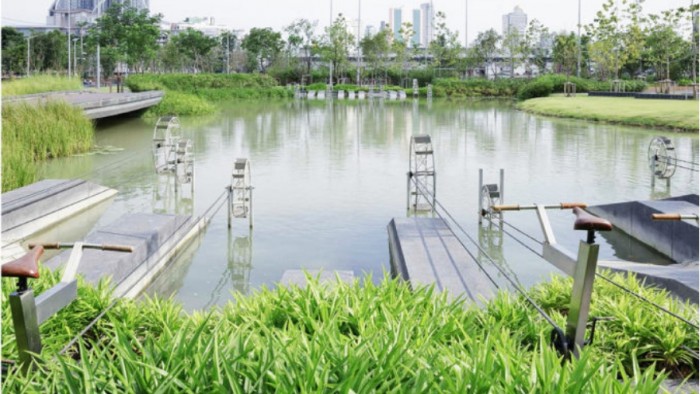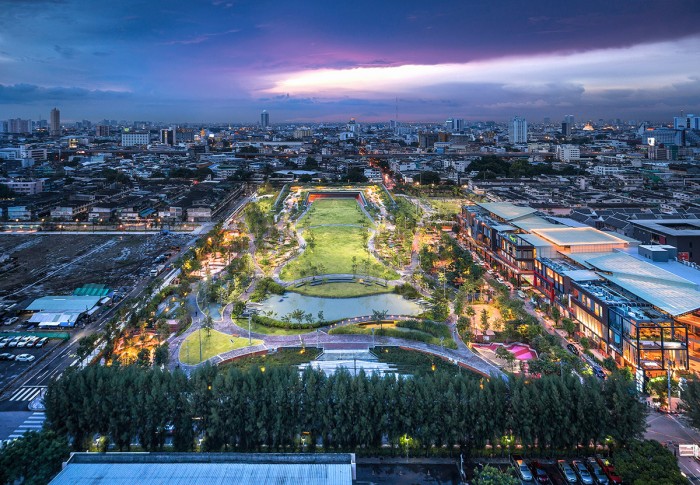What makes a happy city? You’re likely to get very different answers based on who you ask.
I recently asked Thai landscape architect Kotchakorn Voraakhom (who prefers to be called Kotch for short) and she started by saying it lies with healthy people. “The health of the city is directly related to the health of the people. Right now the city is sick so we are all sick,” she says referring to her home city, Bangkok in Thailand.
Ironic that a holidaymaker’s haven like Thailand is at once home to a city considered on the opposite end of what defines a happy city, according to Kotch, who founded the Porous City Network.
For her the solution lies in parks; parks are one of the answers to building happier cities.
As a child Kotch remembers Bangkok’s streets turning into streams in the wet season, so much so that she’d be able to sail a little makeshift boat down them. What was a once a fun activity soon turned to cause for grave concern, when flooding reached new heights in 2011 as the city experienced its worst flood in its history.
It is now estimated that the city will be underwater by 2030.
To combat this, current projects that are underway include concrete dams, paving the canals and a big underground tunnel. But Kotch isn’t very confident in these concrete, engineering-based solutions.
“Some of the solutions are more based on fear rather than co-existence,” she tells me. “And when you base things on fear you really have to have everything under control. But right now the situation is out of control and we kinda approach our problem with only engineering-based solutions where we need to incorporate many other solutions as well.”
Looking back it’s hard to say what could have been done better to avoid what happened in cities like Bangkok which are under threat of drowning in the near future.
But Kotch says urban planning is a key factor. In her city it’s a little too late because the city has been running without a plan. So it’s clear to see where many of the city’s maladies emanate from.
Alongside this, what’s more pressing is the lack of concern on the individual level. Air pollution and urban heat island are major environmental factors in the dry season while flooding plagues the city in the wet season.
She says a huge part of what is causing the city harm comes from the everyday behaviours of the city’s people, which is why planning simply isn’t enough if it’s not galvanised by the actions of people.
“I think it’s more than just planning. It’s about being change yourself. Changing the lifestyle, using public transport, etc. Do something. Grow more trees in the city. We don’t have enough.”
It’s no coincidence either, that Bangkok is one of the cities with the lowest green space per capita.
Not for much longer if Kotch has things her way. She was part of the team that designed the Chulalongkorn Centenary Park, the city’s first public park in nearly three decades.
Conceived of four years before its launch in October last year, the team wanted this park to be more than a green space in the centre of the city. They wanted it to be a vehicle through which Bangkok could address climate change.
It’s a new approach to parks as an urban ecology which she wouldn’t have been able to achieve without engineers and architects who share the same values.
“Architecture and landscape is the same language. To incline a whole park we need something high so the architecture becomes the structure of the park.
“This is building as park, rather than building within park,” she says.
Kotch explains that they’ve devised a system that collects runoff in the rainy season, stores it within the space, and has the ability to filter the water on-site.
This was made possible first by giving the green roof an incline, a seemingly simple mechanism that really is the bedrock of this self-sustaining water system. Gravity then ensures that every drop of rain falling over the park is collected, which then gets stored in water tanks beneath the surface.
Water is further collected at the lowest point of the park in a pond, which includes pedal bikes that allow the public to contribute to cleaning the water.
In the dry season the stored water is in turn used to water the vegetation within the park. One sees a sort of micro circular economy of water at play within the space. This is beyond the public green space adding the proverbial lungs to the polluted city.
Chulalongkorn is a feat for the city and a case study for solutions to dense, flood-prone cities around the world.
Kotch says that her design process is led by a concept called ‘kounkuey,’ which translates as ‘to know something intimately’. It’s a process she keeps at heart, particularly when addressing public space and the stakeholders it impacts.
On involving the community in her projects, she says: “You are helping them design rather than being the designer who sits in the room with all this process. And the process can be fun rather than ask them about policy making, because at the community level this is intangible for them.”
She sees her work as more than mere designer or architect, but as more instrumental in teasing out the real issues that need addressing, by engaging vigorously with the community.
“Of course you are in charge as the designer, but sometimes you have to have the ability to be a design facilitator to really get more answers on the table and have the right alternative for the audience, or leader or policy maker, whoever has the right to make the decisions, to see.”
Throughout our Skype call Kotch was blunt about the severity of Bangkok’s dire situation and the factors that stand in the way of progress, but her optimism is unwavering.
Poor planning? Fix it now; there’s no time to spare. Challenges with policy? Implement projects so that decision-makers can see what’s possible.
“It seems like a kinda hopeless condition, but there is so much we can do. We can all survive through this crisis, but we need to first understand that this is a crisis,” she says.
Much of this optimism is derived from her belief that design can heal, as she concludes, “When I see people in design fields in any category that addresses issues and tries to come up with a solution, I feel there’s more hope because you are trying to use your design to make the world better, and for us to survive.”
Read more on urban design:
Landscape architect Peter Veenstra on the importance of bringing nature into our cities
Ensamble Studio is at the forefront of architecture, art and academic research
Three unique factors that are important to buiding a modern city

